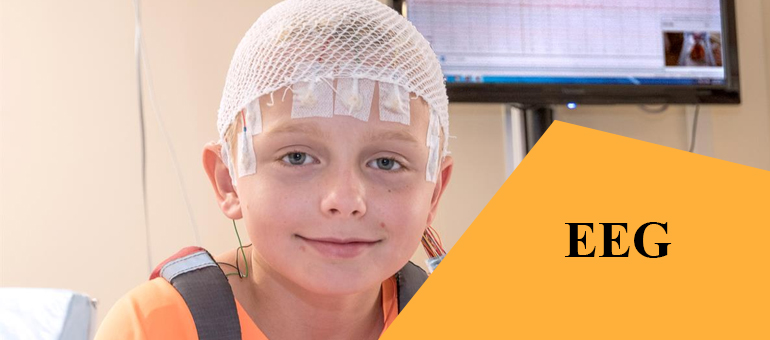Electroencephalography ( EEG )
Electroencephalography (EEG) is an electrophysiological monitoring method to record electrical activity on the scalp that has been shown to represent the macroscopic activity of the surface layer of the brain underneath. It is typically non-invasive, with the electrodes placed along the scalp. Electrocorticography, involving invasive electrodes, is sometimes called intracranial EEG.
An electroencephalogram (EEG) is a test that detects electrical activity in your brain using small, metal discs (electrodes) attached to your scalp. Your brain cells communicate via electrical impulses and are active all the time, even when you're asleep. This activity shows up as wavy lines on an EEG recording.
An EEG is one of the main diagnostic tests for epilepsy. An EEG can also play a role in diagnosing other brain disorders.
Diagnosing
Brain tumor, Sleep disorders And Stroke.
Brain damage from head injury.
Brain dysfunction that can have a variety of causes (encephalopathy).
Inflammation of the brain (encephalitis).
Types:
Routine EEG: A 20-30 minute EEG recording with the patient awake, drowsy and asleep. Photic stimulation and hyperventilation are usually performed.
Stat EEG: A 20-30 minute EEG recording which is reported to the treating Physician within 1 hour of the end of the study.
Ambulatory EEG: A prolonged EEG recording (at least 24 hours), often with simultaneous video, which is setup in the EEG lab, but portable such that the patient can continue the study at home.
Long-term video EEG monitoring: A prolonged video-EEG study (24 + hours), performed in the hospital (often in the ICU), in which a large same of EEG may be obtained to look for intermittent brain disturbances (such as seizures). May be used to help titrate anti-seizure medications.
Frequenty Asked Question
There are no side effects. There may be some electrode cream in your hair after an EEG, it will easily wash out.
For an EEG, aside from your doctor’s orders, you should avoid caffeine for three hours before the exam because an EEG needs to record your brain activity while you are awake, drowsy, and during brief sleep, if possible. Also, your hair should be clean.


